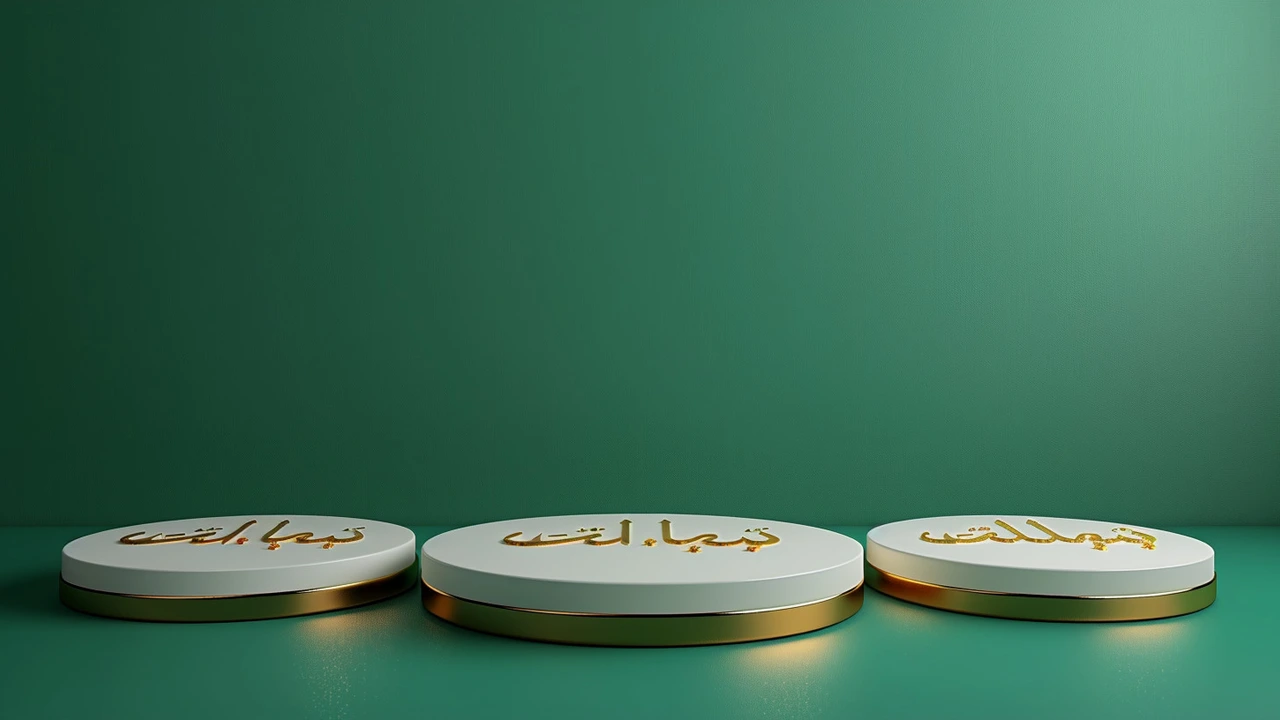Understanding the Significance of Eid-ul-Adha
Eid-ul-Adha, also known as the 'Festival of Sacrifice,' is an immensely significant event in the Islamic calendar. It honors the unwavering faith and devotion Prophet Ibrahim showed towards Allah by his willingness to sacrifice his son Ismail. This story is recounted in both the Quran and the Bible, reflecting its profound resonance in Abrahamic religious traditions. The festival falls on the tenth day of Dhu-al-Hijjah, the twelfth and final month of the Islamic lunar calendar. This period holds special importance, as it is also the month of Hajj, the sacred pilgrimage to Mecca undertaken by Muslims worldwide.
When is Eid-ul-Adha in 2024?
In 2024, Eid-ul-Adha will be observed on different days across various regions due to the sighting of the crescent moon, which marks the beginning of the month of Dhu-al-Hijjah. In India, the crescent moon was sighted on Friday, June 7, leading to the celebration of Eid-ul-Adha on Monday, June 17. In contrast, many other countries including Saudi Arabia, Qatar, the UAE, Kuwait, Jordan, Oman, Syria, Iraq, the UK, US, and Canada observed the moon on June 6. Consequently, they will celebrate the festival a day earlier, on Sunday, June 16. The day preceding Eid-ul-Adha, known as the Day of Arafat, falls on Tuesday, June 15, for these regions.

Pre-Festival Observances: The Day of Arafat
The Day of Arafat, which is deemed the holiest day in the Islamic calendar, precedes Eid-ul-Adha. It commemorates the final sermon of Prophet Muhammad and is a key component of the Hajj pilgrimage. Pilgrims gather at the Plain of Arafat, located outside Mecca, where they perform prayers and seek repentance for their sins. This day is pivotal not only for pilgrims but also for Muslims worldwide who engage in fasting and prayers, seeking spiritual rejuvenation.
Celebrating Eid-ul-Adha: Traditions and Practices
The celebration of Eid-ul-Adha encompasses various religious and cultural customs. The day typically begins with a special prayer service held at mosques or open fields. Muslims dress in their finest clothes and offer prayers known as Salat al-Eid. Following the prayer, the central ritual of the festival involves the Qurbani, or sacrificial animal slaughter. This practice serves as a commemoration of Prophet Ibrahim’s readiness to sacrifice his son and is carried out by families who can afford it. The meat from the sacrificed animal is divided into three parts: one-third is given to the poor and needy, another third to relatives, friends, and neighbors, and the remaining third is kept for the family.

Global Observance and Customs
While the core religious elements of Eid-ul-Adha remain consistent, cultural and regional practices vary widely. In the UAE, for example, the government designates three days of public holidays to mark the occasion, allowing citizens and residents ample time for extended celebrations with family and friends. It is common to see festive decorations in public squares and homes, alongside communal feasts that extend well into the night. In countries like Indonesia and Malaysia, public processions and traditional dances are added to the customary religious observances, highlighting the rich tapestry of cultural expressions surrounding Eid-ul-Adha.
Economic and Social Impact
Eid-ul-Adha also has considerable economic implications, especially in the livestock market. The demand for goats, sheep, cows, and camels spikes, driving up prices and stimulating local economies. But beyond the economic impact, the festival fosters a strong sense of community and charity, reinforcing social bonds and the spirit of giving. The distribution of sacrificial meat to the less fortunate ensures that even the most vulnerable members of society partake in the festivities, promoting an inclusive celebration that transcends socio-economic barriers.

Conclusion
In essence, Eid-ul-Adha is not merely a religious obligation but a profound expression of faith, compassion, and community. It draws millions of Muslims together, whether through the act of pilgrimage or through local celebrations, encapsulating a sense of belonging and spiritual fulfillment. As we approach Eid-ul-Adha in 2024, the anticipation and preparations reflect the enduring significance of this festival, further strengthening the bonds within the global Muslim community.

Joseph Conlon
June 16, 2024 AT 23:56Reading through the guide reminds me how intertwined faith and community become once the holy month arrives. The narrative of Ibrahim's willingness resonates beyond any single tradition, echoing the universal theme of sacrifice. While many emphasize the religious rites, the economic ripple through livestock markets often goes unnoticed, yet it fuels local economies in ways that merit deeper analysis. I find it intriguing that the sighting of the moon still dictates modern calendars, a practice that some modernists might deem outdated, but I must concede its cultural weight. The Day of Arafat, though less publicized, serves as a profound moment of introspection for pilgrims and laypersons alike, reinforcing the theme of humility. Moreover, the division of meat into thirds reflects an early model of wealth redistribution, predating contemporary charitable frameworks. In regions like the UAE, the extension of public holidays illustrates how state policy can amplify communal bonds, though critics sometimes argue about the economic cost. The article rightly notes the variance in celebration dates, but I would add that diaspora communities often reconcile these differences through virtual gatherings, a nuance that modern connectivity enables. The inclusion of traditional dances in Indonesia underscores the syncretic nature of the festival, blending sacred and secular. While the piece mentions the spiritual uplift, it could benefit from a more explicit discussion of the psychological impacts on participants. It is also worth highlighting that charitable distribution during Eid can alleviate food insecurity in urban centers, a point that policymakers might leverage. The mention of meat pricing surge is accurate, yet the article could quantify the typical percentage increase for greater context. From a sociological perspective, the festival functions as a ritual reinforcement of collective identity, a topic that scholars of religious studies constantly explore. I appreciate the thoroughness of the guide, though I would suggest adding a brief timeline for readers unfamiliar with the Hijri calendar. Finally, the guide serves both newcomers and seasoned observers, bridging gaps in cultural knowledge; this dual utility is commendable.
Mohit Singh
June 18, 2024 AT 02:20While the guide does a solid job outlining the basics, it glosses over the emotional toll that fasting on the Day of Arafat can have on those who are already vulnerable. The intense physical strain is often downplayed, and that omission feels a bit careless. In addition, the piece could have spotlighted how urban Muslims negotiate space for prayer amid bustling cityscapes. This oversight, albeit minor, detracts from an otherwise comprehensive overview.
Damian Liszkiewicz
June 19, 2024 AT 04:43Great summary! 😊 I love how you highlighted both the religious core and the local customs-makes the festival feel alive. The way you described the UAE’s three‑day holiday really shows the balance between work and celebration. And those traditional dances in Malaysia? Absolutely fascinating! 🙏 Keep sharing these insights, they help us all feel more connected.
Angela Arribas
June 20, 2024 AT 04:20The term “Eid‑ul‑Adha” should be written without the hyphen, as “Eid al‑Adha”. 😊
Sienna Ficken
June 21, 2024 AT 06:43Oh wow, a guide that tells you when to eat goat meat-who would’ve thought! 🙄 I’m practically shaking with excitement to learn that the moon decides our calendar. Maybe next you’ll explain why we need to wear our “finest clothes” instead of just pajamas. In any case, kudos for stating the obvious with such flamboyant flair.
Zac Death
June 22, 2024 AT 09:06Wow, this guide really captures the spirit of Eid‑ul‑Adha in a way that feels both informative and uplifting. I especially appreciated the way you broke down the three‑part meat distribution, which showcases the festival’s core principle of generosity. It’s amazing how a single event can simultaneously stimulate livestock markets, foster community solidarity, and provide spiritual reflection-all at once. The mention of the Day of Arafat as a day of fasting adds depth, reminding us that preparation goes beyond mere celebration. I also love that you highlighted the varied dates across countries, illustrating how local moon‑sighting traditions keep cultural diversity alive. The discussion about public holidays in the UAE resonated with me; government support can really amplify the joy people experience. Your note on traditional dances in Indonesia sparked my curiosity-I might have to look up some videos soon. Moreover, the economic impact on meat prices is a crucial detail that many overlook, and you presented it clearly. From a personal perspective, I’ve seen families divide the Qurbani meat in ways that strengthen familial bonds, echoing your description. The guide also subtly encourages charitable giving, an essential pillar of the festival that benefits those in need. I think adding a quick checklist for new celebrants would be a handy addition. Overall, the article strikes a perfect balance between scholarly detail and approachable language, making it useful for both novices and seasoned participants. Keep up the excellent work, and thanks for sharing such a thorough overview!
Lizzie Fournier
June 23, 2024 AT 11:30Thanks for the thorough rundown-it’s both scholarly and down‑to‑earth, which I appreciate. The breakdown of the Qurbani process helps newcomers understand the logistics without feeling overwhelmed. I also like how you noted regional differences, like the extra holiday days in the UAE. It’s a solid resource for anyone planning to observe the festival this year.
JAN SAE
June 24, 2024 AT 13:53Indeed, Damian-your enthusiasm truly shines through!; this guide is a fantastic springboard, and I’d encourage you to explore the historical evolution of moon‑sighting practices, which adds a rich layer to our understanding; also, consider adding personal anecdotes about community gatherings, as they resonate deeply with readers!!!
Steve Dunkerley
June 25, 2024 AT 19:03Your suggestion to incorporate historical context is well‑taken; moon‑sighting has been calibrated using both astronomical calculations and traditional observations, a hybrid approach that balances precision with cultural heritage. Including such nuance could enhance the guide’s academic rigor.
Jasmine Hinds
June 27, 2024 AT 00:13Love the energy Zac it really captures the vibe 😊
Madison Neal
June 28, 2024 AT 05:23Glad you enjoyed it! Let’s keep the conversation going and share more insights on how different cultures celebrate.